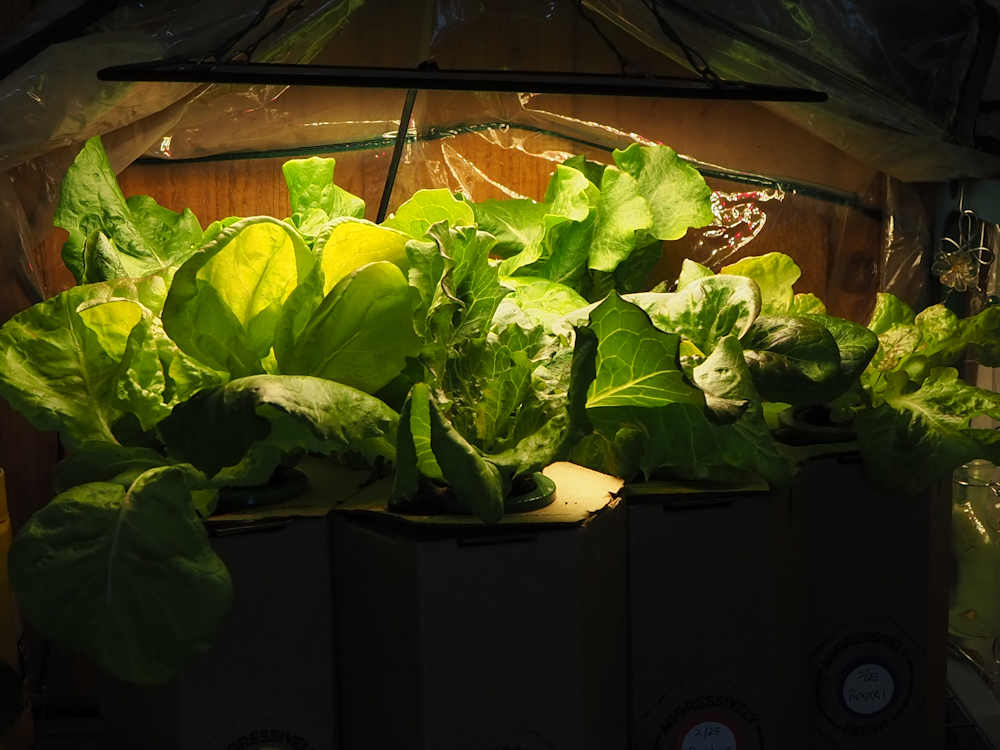Here in the Treehouse, we have to get by on what’s at hand. This series explores simple, nature-friendly alternatives to conventional products and practices.
When you’re in a treehouse, in the middle of the woods, there is no popping down to the corner store for last-minute whatevers. Our excursions are few and far between, so we are coming up with ways to compensate for the lack of easy access. We find this has also led us to try some more eco-friendly methods – in this case, for acquiring greens.
Gardening at the base of the tree is not an option. Never mind the climbing up and down; anything we might try to grow on the forest floor would be quickly snarfed by the local fauna. But I want lettuce. Fresh green things to eat. Greens that I know are uncontaminated.
So I started growing lettuce in my office. This tower rack sits in the corner, taking up a 2’x3′ footprint. It’s got lettuces up top, seedlings in the center, and bok choy and basil plants on the bottom. All of these (well, not the seedlings yet) produce amazing amounts of wonderful leaves.
Fresh veggies, especially greens, start to lose nutritional value the moment they’re picked. In 24 hours, they’ve lost 90% of their nutrition. By growing them here, I have clean, absolutely fresh greens year-round, with a carbon footprint of…well, probably zero. The lights are LEDs and are powered by our solar system. Each lettuce plant uses around two gallons of water during its lifetime, compared to more than twenty-five gallons it takes to grow a head of lettuce in the ground.
The low carbon footprint is important to me, almost as important as the clean food. That Romaine heart that I used to buy for a couple of bucks had to travel from California, and was probably over a week old, maybe a couple of weeks old, by the time I brought it home. And while a couple of bucks seems fairly inexpensive, it’s a lot more than the cost of my lovely home-grown lettuces.
Growing these darlings is a bit different. You don’t wait for the lettuce to get big and then yank it from the garden. Instead, as soon as it’s big enough, you start harvesting the outer leaves, a few at a time. (I have been known to snack on a leaf now and then.) The plants get harvested this way for two or three months. When they’re tired, they bolt, and I retire them with thanks and a bit of ceremony. Each plant has probably given as much lettuce as two or three commercial lettuce heads, by then.
It’s a different way of gardening, and a different way of interacting with food. I’m very aware of the interdependence between me and my plants. I feed them and make sure they have enough light and don’t get too hot, and in return they feed us. Mutual giving.


